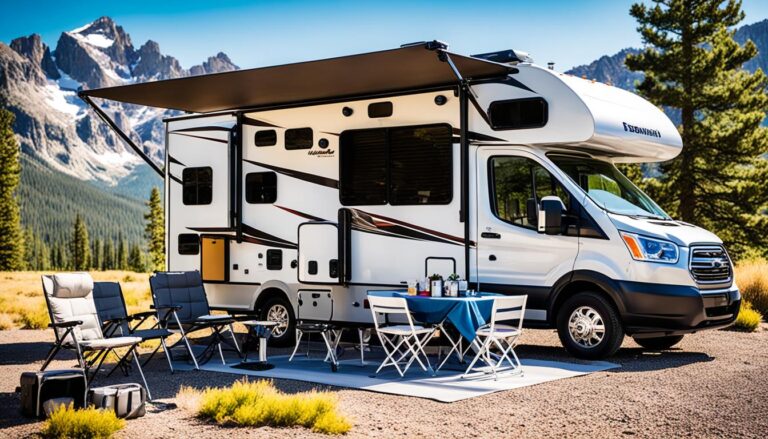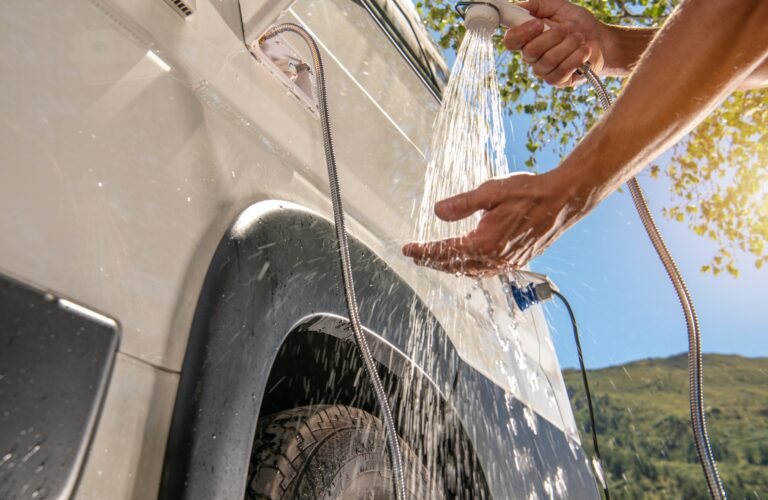As the world becomes more connected, it’s no surprise that people are seeking ways to maintain internet access and connectivity while traveling in their recreational vehicles (RVs). Whether you’re a digital nomad, remote worker, or someone who simply enjoys staying connected while on vacation, reliable internet has become an essential part of the RV lifestyle. In this comprehensive blog post, we’ll explore various options for staying connected on the road, including:
- Cellular Data Plans
- Mobile Hotspots
- Wi-Fi Boosters and Extenders
- Satellite Internet
- Public Wi-Fi Access Points
Cellular Data Plans
One of the most common and accessible methods of staying connected while on the road is through cellular data plans. Most major carriers offer nationwide coverage, providing internet access through your smartphone or a dedicated mobile hotspot device. When choosing a cellular data plan, consider the following factors:
- Coverage: Before committing to a carrier, check their coverage map to ensure they have a strong signal in the areas you plan to travel. While most carriers have extensive nationwide coverage, there may be gaps or weak signals in rural or remote areas.
- Data Allowance: RV travelers can consume a significant amount of data, especially if they work remotely, stream video, or use video conferencing. Choose a plan with sufficient data allowance to avoid overage charges or throttling (reduced speeds after reaching a certain data usage).
- Contract Length: Many carriers offer contract-free plans, which can be ideal for RV travelers who don’t want to commit to a long-term plan. However, longer contracts may offer better pricing and additional perks.
- International Roaming: If you plan to travel outside the United States, check if your carrier offers international roaming and data plans to avoid costly roaming fees.
Mobile Hotspots
Mobile hotspots are devices that connect to a cellular network and provide Wi-Fi connectivity for multiple devices. They are an excellent solution for RV travelers who need a dedicated internet connection separate from their smartphones. When choosing a mobile hotspot, consider the following factors:
- Battery Life: Mobile hotspots rely on an internal battery, which can be a limiting factor in how long you can stay connected. Look for a device with a long-lasting battery or the ability to charge via your RV’s power system.
- Data Plan Compatibility: Ensure the mobile hotspot is compatible with your chosen cellular data plan and carrier.
- Device Connectivity: Mobile hotspots vary in the number of devices they can support simultaneously. Choose a device that can accommodate the number of devices you plan to connect.
- Network Speed: Mobile hotspots can offer varying network speeds depending on the cellular technology they use (e.g., 4G, 5G). Choose a device that supports the fastest network speeds available in your travel areas.
Wi-Fi Boosters and Extenders
Wi-Fi boosters and extenders are devices that help you access and improve the quality of Wi-Fi signals in your RV. They can be especially helpful when trying to connect to a public Wi-Fi network or a weak signal from a nearby source. Wi-Fi boosters and extenders come in various configurations, including:
- Directional Antennas: These devices focus on capturing a Wi-Fi signal from a specific direction. They can be particularly useful when trying to access a weak signal from a nearby source, like a campground Wi-Fi network.
- Omni-Directional Antennas: Unlike directional antennas, omni-directional antennas capture Wi-Fi signals from all directions. They’re suitable for situations where you’re unsure of the Wi-Fi signal’s origin or when you’re moving frequently.
- Wi-Fi Range Extenders: These devices receive a Wi-Fi signal, amplify it, and rebroadcast it to create a stronger and more extensive network within your RV. They can help improve the Wi-Fi connection for all your devices, especially if your RV’s layout has multiple rooms or obstructions.
Satellite Internet
Satellite internet is an option for RV travelers who need internet access in remote areas without cellular or Wi-Fi coverage. While it can be more expensive and slower than other options, satellite internet provides the most extensive coverage, making it an attractive choice for travelers who value connectivity above all else. When considering satellite internet, keep the following factors in mind:
- Equipment Costs: Satellite internet requires purchasing or leasing a satellite dish and modem, which can be a significant upfront expense. Additionally, installation may require professional assistance.
- Monthly Service Fees: Satellite internet providers charge monthly service fees, which can be more expensive than other connectivity options. However, some providers offer pay-as-you-go plans, which can be cost-effective for occasional use.
- Data Allowance: Like cellular data plans, satellite internet plans often have data allowances. Exceeding these limits can result in overage charges or throttling.
- Latency: Satellite internet can have higher latency (delay in signal transmission) than other options, which can affect real-time applications like video conferencing and online gaming- Portability: Some satellite internet systems are designed for stationary use, while others are more portable and can be set up and taken down easily. Consider your travel habits and choose a system that best suits your needs.
Public Wi-Fi Access Points
Public Wi-Fi access points can be found at locations like campgrounds, coffee shops, libraries, and other businesses. They offer free or low-cost internet access, making them an attractive option for RV travelers on a budget. However, public Wi-Fi networks come with their own set of challenges:
- Availability: Public Wi-Fi access points can be limited in rural or remote areas. Plan your route and stops to ensure you’ll have access to Wi-Fi when needed.
- Security: Public Wi-Fi networks can be less secure than private networks, making them more susceptible to cyber attacks. Always use a virtual private network (VPN) when connecting to public Wi-Fi to protect your data and privacy.
- Quality: The quality of public Wi-Fi networks can vary greatly. Some networks may be slow or have limited range, making them less suitable for heavy internet use or streaming.
- Time Limits: Some public Wi-Fi networks impose time limits or require you to log back in periodically. This can be inconvenient if you’re working or need a consistent internet connection.
Top Tips for Staying Connected While on the Road
Now that we’ve explored the various options for RV internet and connectivity, here are some top tips for staying connected while traveling:
- Combine Multiple Connectivity Options: Relying on a single method of internet access can leave you stranded if that option fails. Consider using a combination of cellular data, Wi-Fi boosters, and satellite internet to ensure consistent connectivity.
- Monitor Your Data Usage: Keep track of your data usage to avoid overage charges or throttling. Many carriers and devices offer tools to monitor your usage, or you can use third-party apps.
- Optimize Your Devices for Travel: Ensure your devices, like laptops and smartphones, are optimized for travel by updating software, using power-saving settings, and ensuring you have the necessary accessories for charging and connecting to the internet.
- Plan Ahead: Research your travel destinations and routes to identify potential connectivity challenges. Check coverage maps, locate public Wi-Fi access points, and make any necessary adjustments to your plans.
- Stay Cyber Secure: Protect your devices and data by using strong passwords, keeping your software up-to-date, and using a VPN when connecting to public Wi-Fi networks.
By understanding the various options for RV internet and connectivity and following these top tips, you can ensure that you stay connected and productive while traveling the open road. Happy travels!






